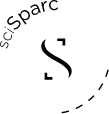预约演示
更新于:2025-05-07
CB x CB1R x CB2 x PPARα
更新于:2025-05-07
关联
1
项与 CB x CB1R x CB2 x PPARα 相关的药物作用机制 CB激动剂 [+3] |
在研机构 |
原研机构 |
非在研适应症 |
最高研发阶段临床1期 |
首次获批国家/地区- |
首次获批日期1800-01-20 |
3
项与 CB x CB1R x CB2 x PPARα 相关的临床试验NCT05182697
A Randomized, Double-Blind, Sparing-effect Placebo Controlled, With Cross-over Study to Evaluate the Safety, Tolerability and Efficacy of SCI-210 in Children With Autism Spectrum Disorder (ASD)
To evaluate the safety and efficacy of SCI-210 in the treatment of Autism Spectrum Disorders (ASD)
开始日期2023-09-01 |
申办/合作机构 |
NCT05766969
A Randomized, Double-Blind, Placebo-Controlled Trial Using Cannabidiol and Palmitoylethanolamide for the Treatment of Painful Diabetic Peripheral Neuropathy of the Feet
The purpose of the study is to evaluate whether the DIA/NPR-6 is a better pain reliever in patients with diabetic neuropathic pain of the feet compared to placebo.
开始日期2023-06-05 |
NCT02645461
Acetylcholine Receptors From Human Muscles as Pharmacological Target for ALS
Amyotrophic lateral sclerosis (ALS) is a fatal disease leading to motor neuron degeneration and progressive paralysis. Other studies have revealed defects in skeletal muscle even in absence of motor neuron anomalies, focusing on acetylcholine receptors (AChRs) and supporting the so-called "dying-back" hypothesis. Outcome of this study will be to understand if the endocannabinoid palmitoylethanolamide (PEA) can reduce the rundown of AChRs currents in ALS muscle, and if it can modify ALS patients' clinical and electrophysiological parameters.
开始日期2014-01-01 |
申办/合作机构 |
100 项与 CB x CB1R x CB2 x PPARα 相关的临床结果
登录后查看更多信息
100 项与 CB x CB1R x CB2 x PPARα 相关的转化医学
登录后查看更多信息
0 项与 CB x CB1R x CB2 x PPARα 相关的专利(医药)
登录后查看更多信息
30
项与 CB x CB1R x CB2 x PPARα 相关的文献(医药)2023-01-01·Frontiers in veterinary science
Expression of cannabinoid (CB1 and CB2) and cannabinoid-related receptors (TRPV1, GPR55, and PPARα) in the synovial membrane of the horse metacarpophalangeal joint.
Article
作者: Zamith Cunha, Rodrigo ; Zannoni, Augusta ; Chiocchetti, Roberto ; Salamanca, Giulia ; Gramenzi, Alessandro ; Rinnovati, Riccardo ; De Silva, Margherita ; Forni, Monica
2021-08-01·Cannabis and Cannabinoid Research3区 · 医学
Protective Effects of Cannabidivarin and Cannabigerol on Cells of the Blood–Brain Barrier Under Ischemic Conditions
3区 · 医学
Article
作者: England, Timothy J. ; Stone, Nicole L. ; O'Sullivan, Saoirse E.
2021-07-01·Pain
Systematic review and meta-analysis of cannabinoids, cannabis-based medicines, and endocannabinoid system modulators tested for antinociceptive effects in animal models of injury-related or pathological persistent pain
Review
作者: Haroutounian, Simon ; Macleod, Malcolm ; Malewicz, Nathalie M ; Pradier, Bruno ; James, Arul ; Diaz-delCastillo, Marta ; Barakat, Ahmed ; Wever, Kimberley ; Davidson, Alexander ; Yanes, Julio A ; Zhang, Xue Ying ; Noes-Holt, Gith ; Barthlow, Tyler ; Bozer, Amber L Harris ; Vinagre, Rafael ; Liao, Jing ; Soliman, Nadia ; Ferdousi, Mehnaz I ; Sena, Christopher ; Hopkins, Mary ; McLoone, Daniel P ; Rice, Andrew S C ; Alaverdyan, Harutyun ; Segelcke, Astra ; Vollert, Jan ; Krane, Elliot ; Romanos-Sirakis, Eleny ; Mardon, Amelia K ; Finn, David P ; Mansfield, Michael ; Power, Emer ; Zhang, Jingwen ; Thomas, James ; Dolgorukova, Antonina ; Healy, Catherine ; Leake, Hayley B ; Mattimoe, Darragh ; Hohmann, Andrea G ; Pogatzki-Zahn, Esther M ; Segelcke, Daniel ; Hong, Simon
1
项与 CB x CB1R x CB2 x PPARα 相关的新闻(医药)2022-08-08
The trial's objectives are to evaluate the safety, tolerability and efficacy of SciSparc's SCI-210 in children and adolescents with ASD
TEL AVIV, Israel, Aug. 08, 2022 (GLOBE NEWSWIRE) -- SciSparc Ltd. (Nasdaq: SPRC) ("Company" or "SciSparc"), a specialty clinical-stage pharmaceutical company focusing on the development of therapies to treat disorders of the central nervous system, today announced that it has received approval from the Israeli Ministry of Health to conduct the Company’s clinical trial for SCI-210 in patients suffering from autism spectrum disorder ("ASD").
Recently, the Company announced it received approval from the Ethics Committee of The Soroka University Medical Center, in Be'er-Sheva, Israel, to conduct the Company’s clinical trial.
“We are pleased to achieve another important milestone that brings us one step closer toward initiation of our clinical trial in ASD,” commented Oz Adler, SciSparc's Chief Executive Officer. "ASD symptoms in pediatric patients may cause a sever decrease in life quality, for parents and children. We believe that our unique and proprietary SCI-210 has the potential to be a new treatment to reduce irritability and other conditions associated with ASD. Patients today have limited treatment options while the need for such treatment rapidly grows. Our drug candidates potentially enable us to provide effective, safer and more tolerable treatment with fewer side effects thanks to the lower doses of cannabinoids, boosted by the combination with CannAmide™, a mission always desirable but even more so when children are the target population."
The trial will investigate the effect of the Company’s drug candidate SCI-210, a proprietary combination of cannabidiol (“CBD”) and CannAmide™, versus CBD monotherapy in treating ASD.
The trial's objectives are to evaluate the safety, tolerability and efficacy of SCI-210 in children and adolescents with ASD in a designed 20-week, randomized, double-blind, placebo controlled with a cross-over clinical trial of 60 children. The trial has three primary efficacy end points: the Aberrant Behavior Checklist-Community (ABC-C) parent questionnaire; the Clinical Global Impressions-Improvement (CGI-I) performed by a clinician; and the effective therapeutic dose.
ASD is a condition related to brain development that impacts how a person perceives and socializes with others, causing problems in social interaction and communication. The term "spectrum" in autism spectrum disorder refers to the wide range of symptoms and severity.
The launch of the trial is pending further approvals by the Israeli Medical Cannabis Agency.
About SciSparc Ltd. (NASDAQ: SPRC):
SciSparc Ltd. is a specialty clinical-stage pharmaceutical company led by an experienced team of senior executives and scientists. SciSparc’s focus is on creating and enhancing a portfolio of technologies and assets based on cannabinoid pharmaceuticals. With this focus, the Company is currently engaged in the following drug development programs based on THC and/or non-psychoactive cannabidiol (CBD): SCI-110 for the treatment of Tourette Syndrome, for the treatment of Alzheimer's disease and agitation; SCI-160 for the treatment of pain; and SCI-210 for the treatment of autism spectrum disorder and status epilepticus.
Forward-Looking Statements:
This press release contains forward-looking statements within the meaning of the "safe harbor" provisions of the Private Securities Litigation Reform Act of 1995 and other Federal securities laws. For example, SciSparc is using forward-looking statements when it discusses the initiation of the Company’s clinical trial in its drug candidate SCI-210 in patients suffering from ASD, the potential effect and evaluation of the drug candidate SCI-210 and further regulatory approvals in Israel to conduct its ASD research trial with The Soroka University Medical Center. Historic results of scientific research and clinical and preclinical trials do not guarantee that the conclusions of future research or trials will suggest identical or even similar conclusions. Because such statements deal with future events and are based on SciSparc's current expectations, they are subject to various risks and uncertainties and actual results, performance or achievements of SciSparc could differ materially from those described in or implied by the statements in this press release. The forward- looking statements contained or implied in this press release are subject to other risks and uncertainties, including those discussed under the heading "Risk Factors" in SciSparc's Annual Report on Form 20-F filed with the U.S. Securities and Exchange Commission (the “SEC”) on April 28, 2022, and in subsequent filings with the SEC. Except as otherwise required by law, SciSparc disclaims any intention or obligation to update or revise any forward-looking statements, which speak only as of the date they were made, whether as a result of new information, future events or circumstances or otherwise.
Investor Contact:
IR@scisparc.com
Tel: +972-3-6167055
分析
对领域进行一次全面的分析。
登录
或

生物医药百科问答
全新生物医药AI Agent 覆盖科研全链路,让突破性发现快人一步
立即开始免费试用!
智慧芽新药情报库是智慧芽专为生命科学人士构建的基于AI的创新药情报平台,助您全方位提升您的研发与决策效率。
立即开始数据试用!
智慧芽新药库数据也通过智慧芽数据服务平台,以API或者数据包形式对外开放,助您更加充分利用智慧芽新药情报信息。
生物序列数据库
生物药研发创新
免费使用
化学结构数据库
小分子化药研发创新
免费使用


